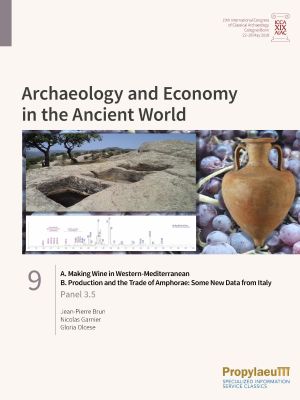
How to Cite
License

This work is licensed under a Creative Commons Attribution-ShareAlike 4.0 International License.
Identifiers
Published
A. Making Wine in Western-Mediterranean B. Production and the Trade of Amphorae: Some New Data from Italy
Panel 3.5
The aim of this volume is to present new data and current multidisciplinary projects on viticulture in antiquity, on the production and circulation of wine, and on the containers that held the wine, involving archaeology, archaeometry, archaeobotany and molecular-archaeology.
The studies in this volume focus on Italy, and its relations to other areas (Spain, Malta), to deepen our knowledge of the transformations in the agricultural landscape. Another focus are wine production facilities, which have until now remained under-studied, such as rock cut vats.
The advancement of technical knowledge is gradually answering the old question of differentiating between wine and olive oil production facilities. We knew that the same presses were used for both products, but now, systematic floatation can turn up olive stones or grape seeds, and biochemical analyses in gas-chromatography or liquid-chromatography coupled with mass-spectrometry now provide very reliable results on the remains in vats.
The second part of the volume presents some new archaeological and archaeometric data related to the production and distribution of wine amphorae - coming from the Tyrrhenian coast of Italy, Spain and Africa - in Italy and the western Mediterranean, the study of which was also carried out using laboratory methods.






